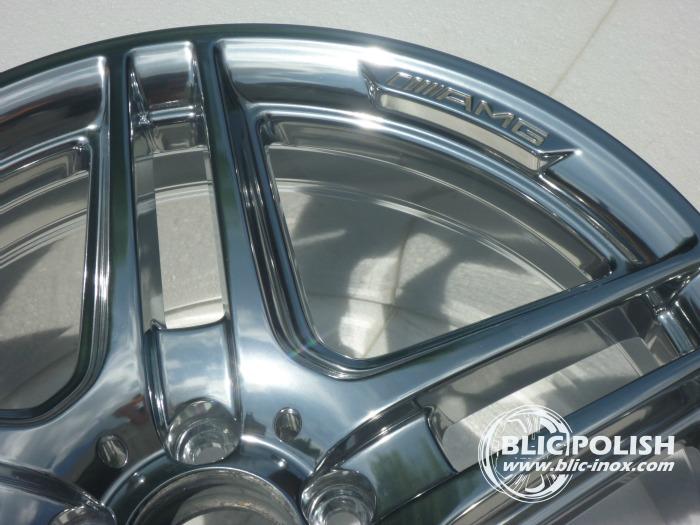Machine polishing to a high gloss

Currently it is the best commercial polishing process with excellent results. In this procedure the surface of the rim becomes additionally hardened after polishing. So it is more robust and easier to be maintained later. Longer durability and abrasion resistance are guaranteed. During the high-gloss polishing process (e.g. of rims), subjects for grinding (granules) are used, as well as water solution (‘compound’) in different containers. During the processing these containers are exposed to vibration.This leads to various movements between granules and the rims in order to achieve the grinding and polishing of the parts. In that way final product remains polished to a high gloss. Using this method the natural glow of the material will be particularly prominent. Surface of the rim remains resilient and thus more robust and easier to maintain, if compared to the process of polishing.
Step 1 (Scrubbing)
After the chemical removing paint, rims surface at a specific time softens and relax and is a great choice for roughing. Wheel is then attached to a machine which is suitable for this purpose. The machine works in a certain direction, and his motions changing. This procedure gets softly brushed surface and molded surface is removed. Step 2 (fine finish) After pre-drilling, attaches to the machine for polishing surfaces. Vibration of granules, they enter into all the pores (slots) and clean them. While at the same time, by rotation and vibration material evenly sanded, polished surface becomes equally. This step is required in order to smooth out any scratches and to repair all the damage remained shallow. The material is now ready for galvanizing if it's necessary.
Step 3 (polishing) In the last step of processing wheels that produces high gloss material, used porcelain granules.Is used in combination with special chemical compound, and the surface after this treatment remains highly smooth and polished to a superior shine. This also produces the protective layer against oxidation, which makes surface very resistant. After the treatment, the pieces are washed in distilled water in order to completely clean the surface for further processing in nanotechnology and powder coating.






